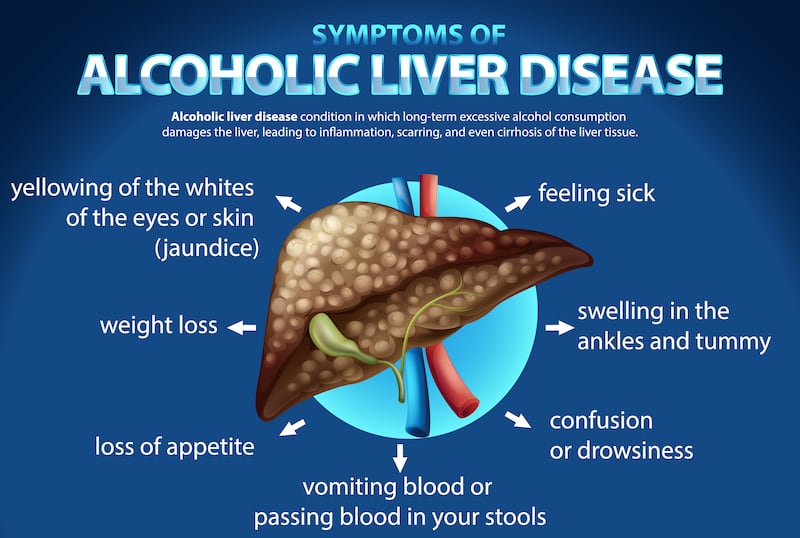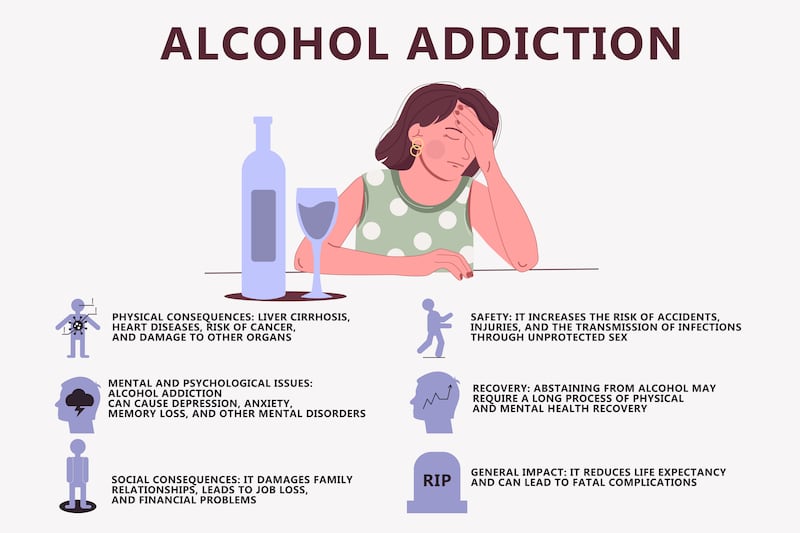In 2022, 7,421 “cases” were treated for problem alcohol use, according to research by the Health Research Board. The State agency also reported that more than half in alcohol treatment were people who had children.

Growing up with parental problem alcohol use affects children in the household with “at least 200,000 children in Ireland living with this adverse childhood experience and a further 400,000 adults living with the legacy of this trauma”, according to Dr Sheila Gilheany, chief executive, Alcohol Action Ireland. “There are multiple impacts including issues with mental health, relationships and, sadly, often addiction.”

Family members of those with addictions regularly become distressed by the inconsistent behaviour of their loved ones. They become worried about finances, employment and mood swings and often become more preoccupied with the behaviours of the person drinking than their own lives, which become more complicated and unpredictable.
Passerose Mantoy, chief executive of the Chrysalis community drug project in Dublin’s north inner city, suggests that the social and environmental factor of alcohol consumption plays a role in developing alcohol dependence. “With a high level of social acceptability and accessibility in our culture, it is easy to normalise excessive alcohol use. In Ireland, people struggle more to understand when someone does not drink rather than if they drink to excess.”
READ MORE
There are no safe limits on alcohol consumption with long-term alcohol misuse seriously affecting various organs of the body, such as the liver, stomach, pancreas and nervous system, with mental health issues a further concern. Despite the dangers of excessive alcohol consumption, a continuous surge in problem drinking patterns threatens long-term consequences for individuals and families.

“Alcohol is a mood-altering substance,” says Mantoy. “It is able to physically alter the brain’s chemistry and functioning. Alcohol produces a feeling of pleasure, of euphoria, often short lived. As a result, the alcohol user wants to recreate the good feelings and drinks more. The brain starts to associate pleasure with alcohol.”
“In the 1970s, 1980s and 1990s, the term alcoholism was still used as the prevailing term which described the Alcoholics Anonymous view which was that you were born with a gene prone to alcoholism and could become an alcoholic from your first drink. Basically, you were either a social drinker or an alcoholic,” says addiction counsellor Marion Rackard who was part of the team responsible for developing the HSE initiative askaboutalcohol.ie and cofounder of the initiative Silent Voices, which aims to break the peculiarly Irish taboo on discussing the impact of harmful drinking on children.
“In 2002, the Department of Health Report of the Strategic Task Force on Alcohol was launched, and it led the way to greater understanding of alcohol as a toxic, psychoactive substance and a different view began to hold sway. This was that if you drink too much, too often, for too long, this pattern could result in a host of alcohol-related physical and psychological problems over time eventually leading to addiction.”

While the signs of alcohol dependence vary depending on the person, their age, gender, health and physical issues, previous alcohol use and existing support networks, the main signs include not being able to function without alcohol, drinking more or for a longer period than originally planned, continuing to drink despite the troubles it causes with friends, family or work colleagues, finding it difficult to control the amount or the times when you drink, craving alcohol, having withdrawal symptoms, ending up in risky or dangerous situations as a direct result of drinking, developing a tolerance to alcohol and not seeming to be drunk after drinking large amounts.

Additionally, symptoms of dependence can vary, but can include poor physical health and hygiene, weakened liver functions, impaired brain function and memory, jaundice, tremors, dizziness and poor diet, with the addition of mood, depression, isolation, low motivation and mood swings.
Mara de Lacy, a founder of the Ana Liffey Drug Project and Áit Linn, an alcohol and mental health facility in north Dublin, suggests that “quantifying addiction or even talking about ‘early’ signs are redundant as each individual’s experience and addictions’ effects are different. I have known individuals who felt gripped by addiction after their first drink and others who drink daily but feel that they have no addiction issues.
“The people who live with them often don’t agree. People around the problem drinker can experience them as unreliable, inconsistent, psychologically unavailable, overly selfish, and difficult to trust and engage with.”
Often, when addressing addiction, it is a person’s relationship surrounding alcohol that requires attention. The misuse or addictive behaviour is better understood when the potential impact on a person’s life is recognised, be it their health, finances, relationships or employment.
“It is beneficial for any drinker to undertake the HSE Self-Assessment tool as it gives an indication to the drinker regarding the role of alcohol in their lives and the degree to which it interferes in any area of their lives; physically, mentally, emotionally, socially, family, work,” says Rackard. “Each individual has their own unique pattern of drinking and subsequent behaviours which may or may not jar with their value system.
“The degree to which alcohol is allowed to be part of people’s lives is often not adequately considered as it is driven more by the social group or occupational or family circumstances. For many it easily gets out of control outside of their awareness until some accident or injury occurs due to drinking. Ireland is an alcoholgenic society.”
Considering Ireland has one of the highest levels of binge drinking in the world, Rackard reminds us that Irish society grossly underestimates how much alcohol we drink. “This is not surprising when we are constantly bombarded with messages that normalise such drinking which is suggested every day on all media channels,” says Rackard.
“The extent of alcohol marketing in Ireland, with a conservative estimate spend of €115 million per year, is a huge enabler of normalising drinking to the extent that problems are completely ignored with no mention of addiction. This is a huge enabler for heavy drinkers in encouraging them to continue drinking, all of which has detrimental consequences for spouses and children and levels of domestic violence.”
However, Rackard informs us that, on average, 1,500 people are in hospital because of alcohol-related illnesses, four people die every day from an alcohol-related illness, and 15 per cent of the population in Ireland has an alcohol use disorder which is almost 600,000 people. “There are many more examples,” he says, “but behind each of those statistics are individuals and families who are deeply impacted by alcohol.”
Treatment options for alcohol dependency are varied from attending your local GP, joining Alcoholic Anonymous meetings, accessing addiction counselling through community groups to residential treatment centres.
Mantoy advises checking the various treatment options and their entry criteria, the length of the treatment programme, the ethos, location, cost and involvement of family members or concerned persons.
“Preferably we would suggest, if possible, to visit the agencies, talk to a staff member, talk to a previous service user to ensure it is the right fit for you,” she says. “The key message is reach out for help as soon as you can; don’t wait until the addiction has taken hold of you.”
- Ask About Alcohol
- Alcohol Action Ireland
- Addiction Counsellors of Ireland
- Family Addiction Support Network




















